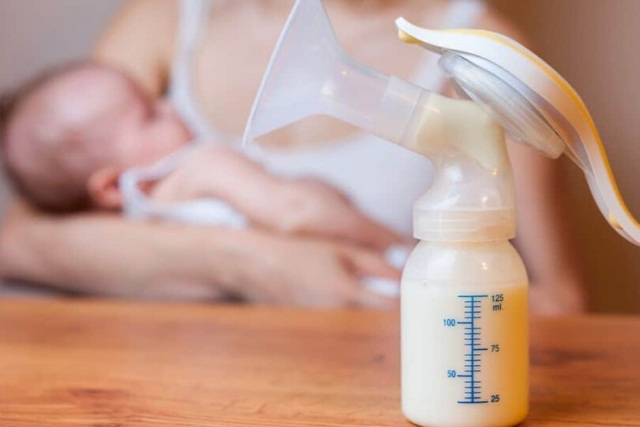If you think that breast milk is the best food selection for your kid, however, you’re unable to lactate, or you don’t desire to, what can you do? That’s where exclusive pumping comes in. Exclusive pumping may be a good way to supply your baby along with your breast milk without putting the baby to the breast. In this article, we will discuss everything related to exclusive breast milk pumping. Read on to find out everything that you need to know.

What is Exclusive Pumping?
Exclusive pumping is also called EPing and breast milk feeding. It is the method of removing breast milk from your breasts at regular times throughout the day. You can then provide that milk to your baby either by a bottle, tube feeding or through another different feeding technique.
Reasons For Exclusive Pumping
There are several reasons ladies favor to pump exclusively. Here are a few of those reasons:
- You have a preterm baby within the hospital NICU who cannot wet-nurse.
- Your baby has issues latching on to your breast.
- You have to return to work or school right away.
- You are distressed regarding your milk supply and prefer to see how much your kid is getting.
- Breastfeeding is very painful; however, you’ll be able to tolerate pumping.
- You have multiples: twins, triplets, or more.
- You simply do not want to breastfeed.
How Many Times A Day To Pump?
The number of times a day that you should pump depends on your child’s age. A newborn can take a bottle of breast milk around two to three hours. So, during the first few weeks, you should try to pump at least every 2 to 3 hours—about 8 to 12 times each day—to stimulate your body to produce a healthy milk supply. As your baby gets older, he or she will take more at each feeding, but go longer between feedings. As long as your milk supply is plentiful, you may be able to go longer between pumping sessions, as well.
How Long To Pump At Each Session?
At every session, you should pump for at least 15 minutes on each side. It will take a couple of minutes for your milk to start to let-down, so give yourself enough time. You also want to try to fully empty your breasts since this is an important part of stimulating the production of more breast milk.
You don’t need to pump for longer than twenty minutes. Pumping for fifteen to twenty minutes more frequently throughout the day can typically turn out a lot of breast milk than pumping less often for more extended periods of your time.
How Much Breast Milk To Pump For Your Baby?
Pump the maximum amount as you’ll be able to at every pumping session. Then, put the breast milk into bottles or storage containers in the amount that your child takes at each feeding. When your child may be a newborn, he/she can drink less breast milk than an older kid at every feeding, however, they will eat a lot of usually than an older kid can. Here are some guidelines for how much breast milk to pump and place within the bottle for your child:
During the first few days after the birth of your baby, you will only be able to pump and collect a small amount of colostrum. Colostrum is the first breast milk. It is concentrated and really nourishing, so a tiny amount is all your baby needs.
After the first week, you should be able to pump two to three ounces every two to three hours, or about an ounce an hour or 24 ounces in a 24 hour period. You would need to double this quantity if you’ve got twins, triple it for triplets, etc.
After about one month, you’ll want around three to four ounces each three to four hours, or about 24 to 32 ounces a day.
By the time your baby is six months old, he or she will need about six to eight ounces every four to six hours, so approximately 36 to 48 ounces a day.
It’s easier to feed your baby once you are bottle feeding in place of breastfeeding. So, make sure you are giving your kid what he wants on a daily basis and in each bottle. There’s a simple 3-step formula you’ll be able to use to calculate what quantity breast milk to place in a bottle.
Exclusive Pumping And Family Planning
When it involves the interference of gestation, exclusive pumping is not the same as exclusive breastfeeding. The lactational amenorrhea method (LAM) of birth control may work during the first six months of exclusive breastfeeding, but it is not considered effective with pumping. Therefore, if you do not wish to become pregnant again right away, you and your partner should use another form of contraception. Be sure to let your doctor know that you are exclusively pumping, though. Since some varieties of contraception contain sex hormones, they will cause a decrease in your milk supply.
Therefore, to conclude, exclusive breastfeeding can be a wonderful thing, provided you are well informed about it before. So go to your nearest doctor to know more about this.
Sources:
- https://www.ncbi.nlm.nih.gov/pmc/articles/PMC5646745/
- https://internationalbreastfeedingjournal.biomedcentral.com/articles/10.1186/s13006-017-0121-1